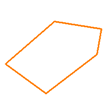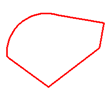A note to Parent...
Many a times, when children have problem or struggling solving Mathematics questions, parents will comment," I remembered my Math subject was the worst among all subjects, that is why my children follow my learning style. I think it is very important for parents to engage in their children's education from as early as Pre-K to their college level as in the present society, it focus on education, career and life readiness.
To kickstart with parent engagement, we will introduce one of the most important features of
Principles and Standards for School Mathematics. They are:
1) The Equity Principle - all students must have the opportunity and adequate support to learn Mathematics "regardless of personal characteristics, background, or physical challenges"
2) The Curriculum Principle - Students must be helped to see that Mathematics is an integrated whole, not a collection of isolated bits and pieces.
3) The Teaching Principle - Effective Mathematics teaching requires understanding what students know and need to learn and then challenging and supporting them to learn it well(NCTM,2000,p.16)
4) The Learning Principle - Mathematics today requires not only computational skills but also the ability to think and reason mathematically to solve new problems and learn new ideas that students will face in future.
5) The Assessment Principle - Assessment should be a major factor in making instructional decision. Teachers can better make the daily decisions that support student learning by continuously gathering data on students' undertsanding of the Mathe concept.
6) The Technology Principle - Calculators, computers and other merging technologies are essential tools for doing and learning Mathematics.
With these six principles, teachers will create an environment where students take risks and share and defend Mathematical ideas, they will be actively engaged in problem solving through teachers' guidance. First is
the language of doing mathematics: children in traditional Mathematics classes often describe Mathematics as imitating what the teacher shows them. These are low-level thinking activities and do not adequately prepare students for the real act of doing Mathematics. In contrast, we need to engage students in doing Mathematics with the following- compare, explain, explore, predict, investigate, verify and solve. These verbs lead to higher-level thinking and encompass 'making sense' and 'figuring out'.
Next is
the classroom environment for doing mathematics: classrooms where students are making sense of Mathematics do not happen by accident - they happen because the teacher establishes practices and expectations that encourage risk taking, reasoning, sharing.
Parents... start learning Mathematics with your children now, it is definitely a fun and interesting subject!!!























